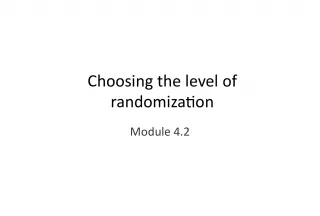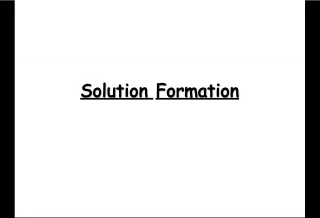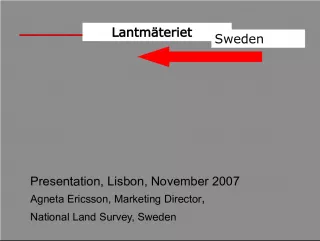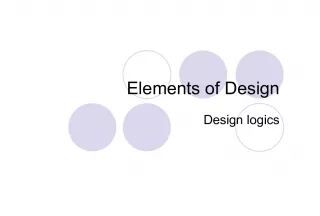Basics of Research Design and Hypotheses Formation


This article covers the fundamentals of research design and hypotheses formation, specifically focusing on experimental designs and testable statements of causal relationships between variables derived from theory. The research design is a crucial element for collecting, analyzing and interpreting data to draw inferences concerning causal relations among variables.
- Uploaded on | 0 Views
-
 ayush
ayush
About Basics of Research Design and Hypotheses Formation
PowerPoint presentation about 'Basics of Research Design and Hypotheses Formation'. This presentation describes the topic on This article covers the fundamentals of research design and hypotheses formation, specifically focusing on experimental designs and testable statements of causal relationships between variables derived from theory. The research design is a crucial element for collecting, analyzing and interpreting data to draw inferences concerning causal relations among variables.. The key topics included in this slideshow are Research design, experimental designs, hypotheses formation, causal relationships, testable statements,. Download this presentation absolutely free.
Presentation Transcript
1. III. Research Design Part I: Experimental Designs
2. Hypotheses A hypothesis is a testable statement of causal relationship between two variables , derived from theory Must specify a relationship between an independent and dependent variable Clear, specific, amenable to empirical testing, value-free (F-N & N)
3. Research Design The program that guides the investigator in the process of collecting, analyzing, and interpreting observations. It is a logical model of proof that allows the researcher to draw inferences concerning causal relations among the variables under investigation (F-N and N).
4. Relationships (Covariation) between Variables Relationships between variables : Two variables are related to one another (i.e. are correlated) if one or more values of one variable tend to be associated with one or more values of the other variable.
5. Directional Relationships Apply to cases where the values of the IV and DV are orderable (directional) variables Positive relationship: As ones education level increases, the frequency of voting increases There is a positive relationship between ones education level and voting frequency
6. Directional Hypotheses (contd) Negative relationship: As the number of hours of negative ads watched increases, the frequency of voting decreases There is a negative relationship between exposure to negative advertising and ones voting frequency
8. Non-Directional Hypotheses Appropriate for variables that are not orderable Hypothesis describes comparison among categories Examples Men have greater levels of support for President Bush than do women Whites are most likely to be Republican, while African- Americans are most likely to be Democrat
9. Research Design and Causality Relationships between variables : Two variables are related to one another (i.e. are correlated) if one or more values of one variable tend to be associated with one or more values of the other variable. Causal relationship : A relationship in which one variable directly causes/explains the other variable.
10. Establishing Causality (F-N&N) 3 Criteria (Evidence Needed) for Establishing Causality Covariation (X is correlated with Y) Time Order (X precedes Y in time) Nonspuriousness (The observed relationship between X and Y is not spurious)
11. Spurious Relationship A relationship between two variables that is presumed to be causal, when in fact it is not An observed relationship between X and Y is said to be spurious (or partly spurious) if there exists a third variable Z (a control variable) which is both a cause of Y AND is correlated with X.
12. Spurious Relationship Y X Z (Presumed Causal Relationship) (True Causal Relationship)
13. Example of Spuriousness
14. Gender and Corruption Causal or Spurious? http://www.iq.harvard.edu/blog/pb/2005/10/sex_and_corruption.html
15. The Democratic Peace: Causal or Spurious? War Democracy Z(???)
16. Experimental Designs 1. Select a sample 2. Randomly assign subjects into 2 or more groups. The number of groups is equivalent to the number of values of the independent variable(s). 3. Observe (measure) DV for all groups (if design includes pretest) 4. Introduce the stimulus (IV) 5. Observe (measure) DV for each group 6. If the change in the value of the dependent variable varies significantly across groups, then we conclude that X Y Key distinguishing features of an experimental design: Randomization and Manipulation of IV by the researcher (when introduced and to whom)
17. Experimental Designs A bunch of people Treatment Group Control Group Random Assignment Random Assignment Measure the DV Measure The DV (PRE-TEST) Stimulus Placebo Introduce the IV Treatment Group Control Group Measure the DV (POST-TEST) Measure the DV
18. Simple Experimental Designs 2-Group Pretest - Posttest Design (Classical or Simple Experiment) R O1 X O2 R O3 O4
19. Simple Experimental Designs 2-Group Pretest - Posttest Design (Classical or Simple Experiment) R O1 X O2 R O3 O4 OR R O1 X1 O2 R O3 X2 O4
20. Experiments and Causality Correlation?
21. Experiments and Causality Covariation? Comparison of two or more groups (on dependent variable) experiencing different levels of exposure to the causal (explanatory) variable (X). This establishes covariation .
22. Experiments and Causality Time Order?
23. Experiments and Causality Time Order? The introduction of the independent variable (stimulus) is manipulated by the researcher to insure that changes in IV precede changes in DV.
24. Experiments and Causality Spuriousness?
25. Experiments and Causality Spuriousness? Random assignment insures that rival hypotheses are ruled out, thus eliminating the threat of spuriousness . (How?)
26. Experiments and Causality Spuriousness? Random assignment insures that rival hypotheses are ruled out, thus eliminating the threat of spuriousness . (How?) Use of matching as a strategy to control for rival explanations
27. Simple Experimental Designs 2-Group Posttest Only Design R X O1 R O2
28. Simple Experimental Designs 2-Group Posttest Only Design R X O1 R O2 OR R X1 O1 R X2 O2
29. Other Types of Experimental Designs Multiple Group Pretest - Posttest Design R O1 X1 O2 R O3 X2 O4 R O5 X3 O6 R O7 X4 O8 Multiple Group Posttest Only Design R X1 O1 R X2 O2 R X3 O3 R X4 O4
30. Other Types of Experimental Designs Solomon 4-Group Design R O1 X O2 R O3 O4 R X O5 R O6
31. Extensions of the Classical Experiment Multiple observations over time R O1 X1 O2 O3 R O4 X2 O5 O6
32. Extensions of the Classical Experiment Factorial designs - each group represents a unique combination of values on two (or more) different variables. For two independent variables X and Z (where X and Z each take on two possible values): R O1 X1, Z1 O2 R O3 X2, Z1 O4 R O5 X1, Z2 O6 R O7 X2, Z2 O8 Factorial designs allow the researcher to test for an interaction effect : Two independent variables interact to affect a dependent variable if the effect of one variable depends on the value of the second variable.
34. Zilber and Niven (SSQ) Table 1: 2-Group Posttest Only R X1(black) O1 R X2(A-A) O2
36. Zilber and Niven (SSQ) Table 3: 2X2 Factorial Design R (black/liberal) O1 R (A-A/liberal) O2 R (black/conserv) O3 R (A-A/conserv) O4 To see how the effect of racial label varies as a function of ideology, we compare O1-O2 to O3-O4
38. Zilber and Niven (SSQ) Table 3: 2X2 Factorial Design R (black/liberal) O1 R (A-A/liberal) O2 R (black/conserv) O3 R (A-A/conserv) O4 Conclusion: The choice of racial labels does affect white attitudes toward blacks, but only among liberals.
39. 1.What effect do A & B have on O? 2. Is there an interaction effect? (Explain)
40. Evaluating Research Designs: Internal Validity Internal Validity - the degree to which we can be sure that the independent variable caused the dependent variable within the current sample Extrinsic Factors: Selection effects with respect to recruitment/assignment of subjects (units) to treatment and control groups Intrinsic Factors: Factors threatening validity that occur outside the laboratory during the period of the study result from changes in, reactions to (or general ineffectiveness of) the measuring instrument, or involve some type of reactive effect of observation
41. Evaluating Research Designs: Internal Validity Extrinsic factors: Selection Important intrinsic factors include: History Maturation Experimental mortality Instrumentation Testing Regression artifact Interactions with selection - e.g. selection history and selection maturation
42. For each of the following intrinsic threats to internal validity, explain: What the specific threat means Whether or not (and why or why not) an experimental design is protected from this threat
43. History? R O1 X1 O2 R O3 X2 O4
44. Maturation? R O1 X1 O2 R O3 X2 O4
45. Experimental Mortality? R O1 X1 O2 R O3 X2 O4
46. Instrumentation? R O1 X1 O2 R O3 X2 O4
47. Testing? R O1 X1 O2 R O3 X2 O4
48. Regression Artifact? R O1 X1 O2 R O3 X2 O4
49. Selection History and Selection Maturation R O1 X1 O2 R O3 X2 O4
50. Evaluating Research Designs: External Validity External Validity - the degree to which the results of the analysis can be generalized beyond the current sample/study . Can be maximized by: Using subjects (units) that are representative of the population to which ones theory applies Using a laboratory that is as close to real life conditions as possible Field experiments
51. Applications 1. Iyengar, Shanto, Mark D. Peters, and Donald R. Kinder. 1982. Experimental Demonstrations of the Not-So-Minimal Consequences of Television News Programs . American Political Science Review 76: 848-58. 2. Schram, Sanford F., Joe Soss, Richard C. Fording and Linda Houser. 2009. Deciding to Discipline: A Multi-Method Study of Race, Choice, and Punishment at the Frontlines of Welfare Reform . American Sociological Review, 74(3), 398-422. 3. Gerber, Alan S., Donald P. Green, and Christopher W. Larimer. 2008. Social pressure and voter turnout: evidence from a large-scale field experiment. American Political Science Review 102:3348. Assignment #5 (Due October 5): In approximately 2 single-spaced pages , answer the following questions. 1. For each of the three application readings, identify and diagram (using the notation in Frankfort-Nachmias and Nachmias) the specific type of experimental design employed by the authors. 2. Choose one of the three studies to focus on for this question. Evaluate the internal validity and external validity of the study you have chosen.























